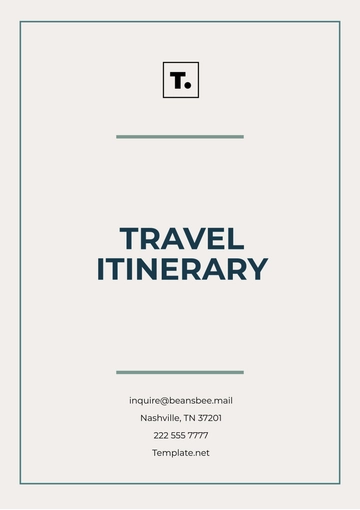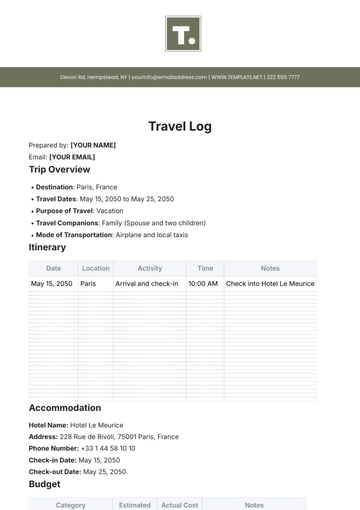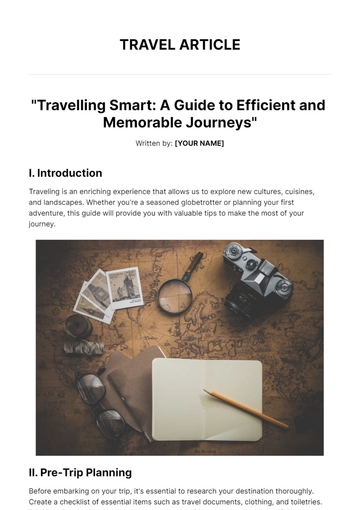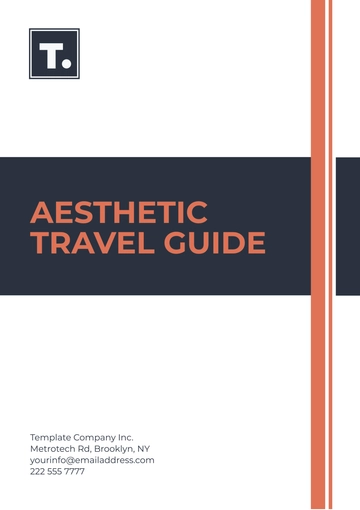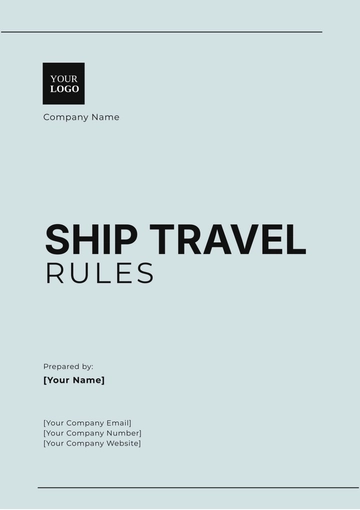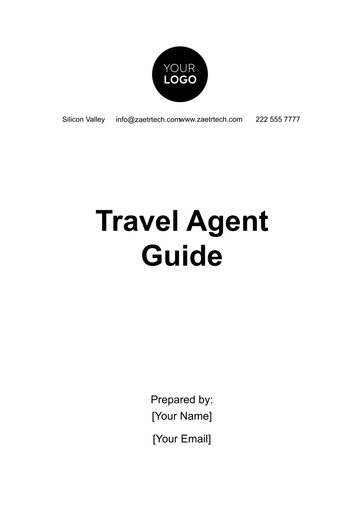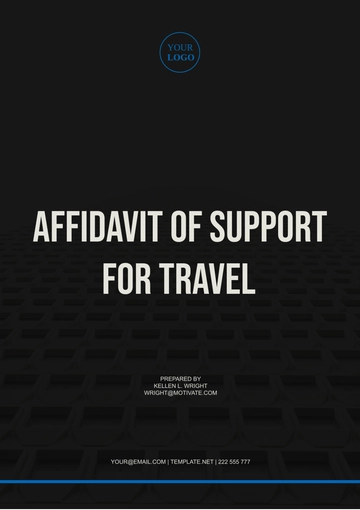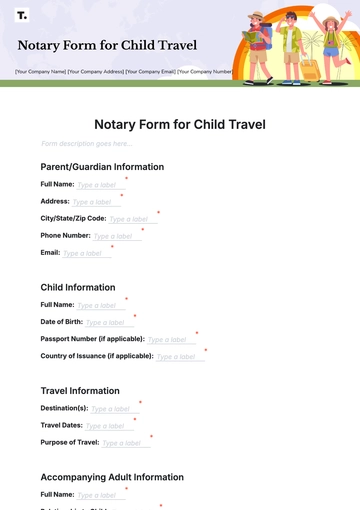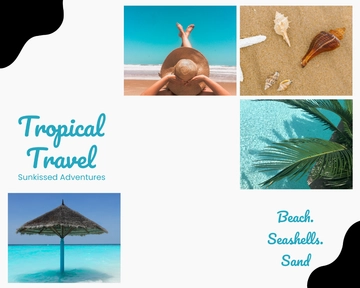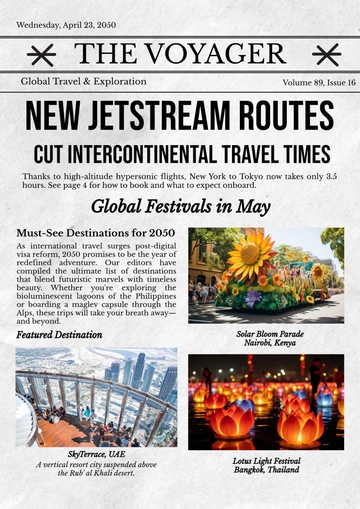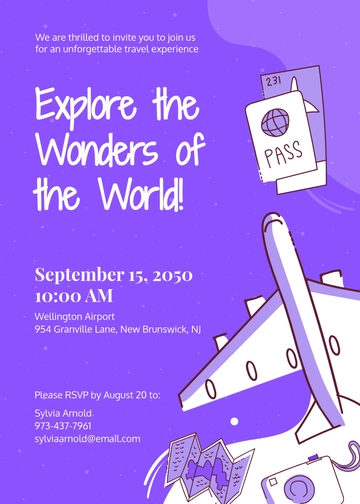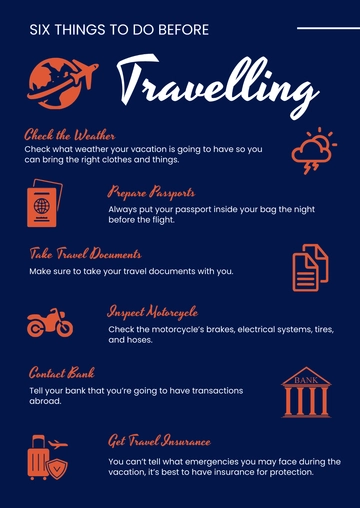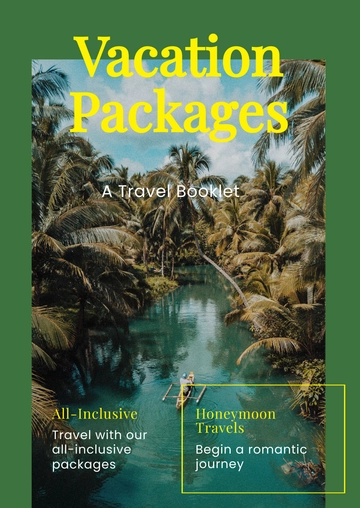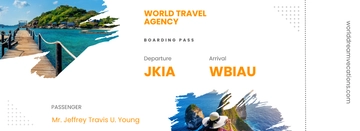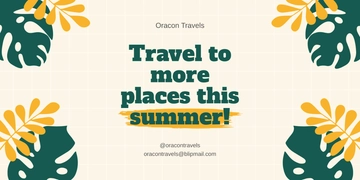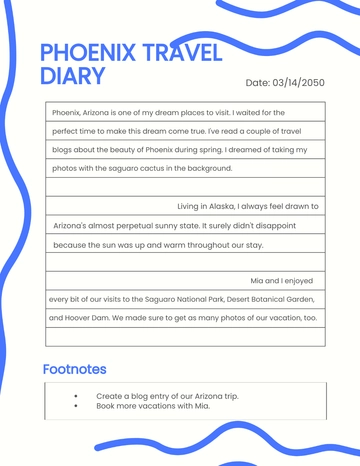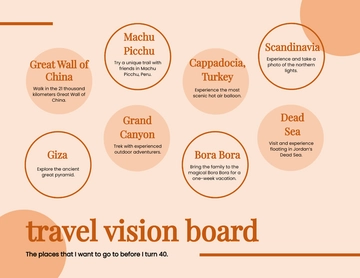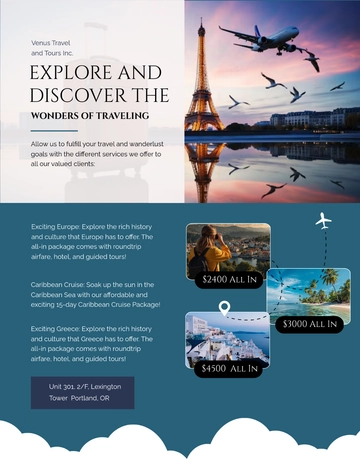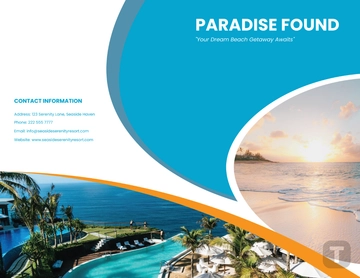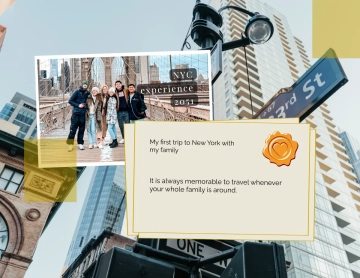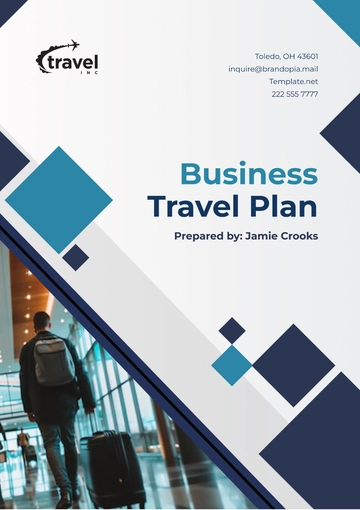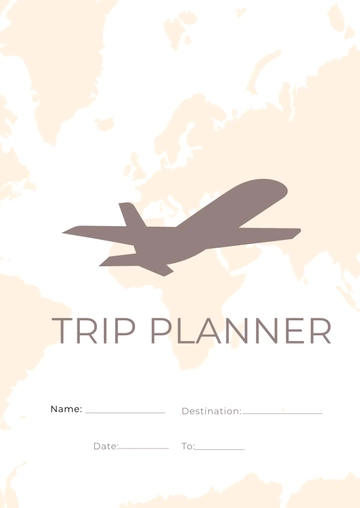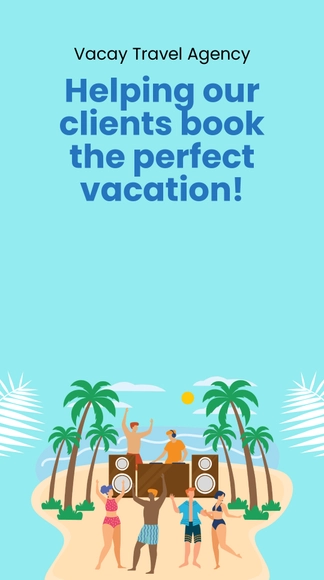Free Travel Agency Training Guide
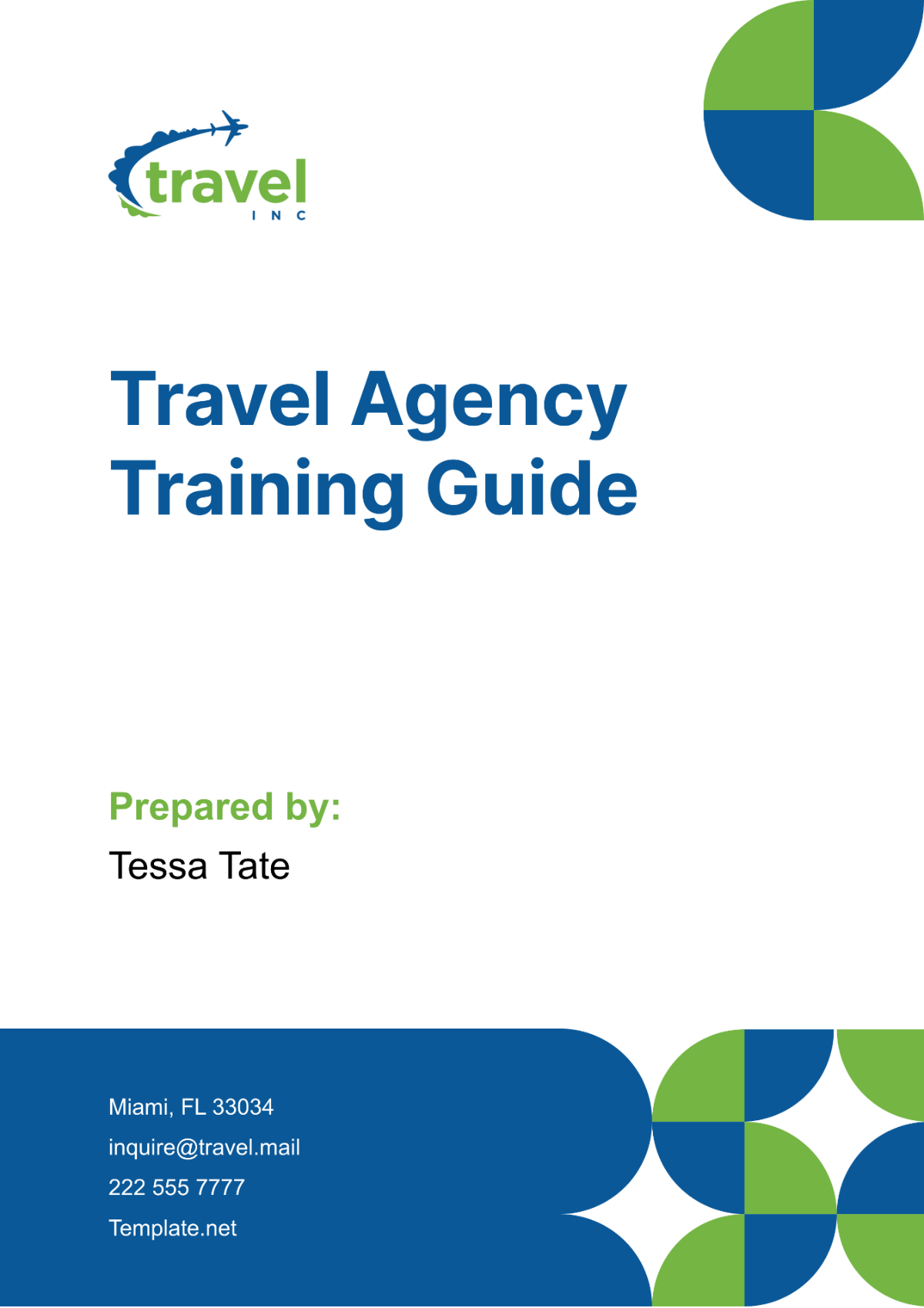
I. Introduction
A. Welcome to [Your Company Name]
Welcome to [Your Company Name], a leading travel agency dedicated to providing exceptional travel experiences for our clients. As a member of our team, you play a crucial role in delivering the quality service that our clients expect and deserve. We are excited to have you on board and look forward to your contributions to our shared success.
At [Your Company Name], we believe in the power of travel to broaden horizons, create connections, and inspire shared experiences. We are committed to making every journey memorable by offering personalized services tailored to our clients’ unique needs and preferences.
Our team is our greatest asset. Your passion, dedication, and expertise are what allows us to stand out in the competitive travel industry. Together, we can continue to build on our reputation for excellence and create unforgettable experiences for our clients.
B. Our Mission and Vision
Our mission at [Your Company Name] is to make travel an unforgettable experience for our clients. We strive to provide personalized and professional services that exceed our clients’ expectations. We believe that travel is more than just reaching a destination; it’s about creating memories that last a lifetime.
Our vision is to be a trusted travel partner for travelers worldwide, known for our commitment to quality, integrity, and customer satisfaction. We aim to lead the industry in innovation and customer service, continually setting new standards for excellence in travel.
C. The Importance of Customer Service
In the travel industry, customer service is paramount. It can make the difference between a one-time customer and a loyal client who returns year after year. Here are some key aspects of customer service that we should focus on:
Understanding Customer Needs: Every traveler is unique, with their own preferences, needs, and expectations. It’s our job to understand these needs and tailor our services accordingly. By taking the time to listen to our clients and understand their travel goals, we can create personalized travel experiences that meet and exceed their expectations.
Prompt and Effective Communication: Whether it’s responding to inquiries or resolving issues, timely and effective communication is crucial. Our clients rely on us to provide accurate information and support when they need it. By communicating clearly and promptly, we can build trust and ensure our clients feel valued and supported.
Going the Extra Mile: In a competitive industry like travel, going the extra mile to exceed customer expectations can set us apart from the competition. This could mean offering personalized recommendations, providing additional assistance, or simply taking the time to check in with our clients during their travels. These small gestures can make a big difference in our clients’ travel experiences.
Building Long-Term Relationships: By providing excellent service consistently, we can build long-term relationships with our clients, leading to repeat business and referrals. This involves maintaining regular contact with our clients, understanding their evolving travel needs, and continually finding ways to enhance their travel experiences.
II. Services Offered
A. Flight Booking
At [Your Company Name], we offer comprehensive flight booking services. Here are some key aspects of this service:
Global Network: We have a vast global network that allows us to book flights to destinations all over the world. This means we can find the best routes and fares for our clients, no matter where they’re headed.
Price Comparison: We compare prices from various airlines to ensure our clients get the best deal possible. We understand that cost is a significant factor for many travelers, and we strive to provide value for money.
Flexible Options: We offer flexible booking options, including multi-city flights, round trips, and one-way tickets. This flexibility allows us to cater to a wide range of travel needs.
Customer Support: We provide ongoing customer support from the moment of booking until our clients safely reach their destination. This includes assistance with flight changes, cancellations, and any issues that may arise during travel.
Frequent Flyer Programs: We help our clients take advantage of frequent flyer programs, which can offer significant savings and benefits for regular travelers.
B. Hotel Reservation
We also provide hotel reservation services. Here are some key points:
Wide Range of Accommodations: We offer a wide range of accommodations to suit different budgets and preferences. From luxury resorts to budget hotels, we can find the perfect place for our clients to stay.
Detailed Information: We provide detailed information about each accommodation, including amenities, location, and guest reviews. This helps our clients make informed decisions about where to stay.
Special Requests: We handle special requests, such as early check-in, late check-out, or specific room types. We understand that the little details can make a big difference in our clients’ comfort and satisfaction.
Cancellation Policies: We clearly communicate the cancellation policies of each accommodation. This ensures our clients understand the terms and conditions of their booking.
C. Tour Packages
Tour packages are a popular choice for many travelers. Here’s what we offer:
Customized Itineraries: We create customized itineraries based on our clients’ interests and preferences. Whether they’re interested in history, nature, food, or adventure, we can design a tour package that fits their needs.
Group and Private Tours: We offer both group and private tours. Group tours are a great way to meet fellow travelers, while private tours offer a more personalized experience.
Local Guides: We work with local guides who have in-depth knowledge of their area. This ensures our clients get the most out of their tours.
All-Inclusive Packages: Our all-inclusive packages take care of all the details, including transportation, accommodation, meals, and activities. This allows our clients to relax and enjoy their trip without worrying about logistics.
Value for Money: We strive to provide tour packages that offer excellent value for money. We carefully select high-quality services and negotiate the best prices on behalf of our clients.
D. Travel Insurance
Travel insurance is an essential part of any trip. Here’s how we can help:
Comprehensive Coverage: We offer comprehensive travel insurance that covers a wide range of scenarios, including medical emergencies, trip cancellation, lost luggage, and more.
Tailored Policies: We can tailor policies to suit our clients’ specific needs. Whether they’re going on a short city break, a long-haul adventure, or a business trip, we can find the right coverage for them.
Claims Assistance: We provide assistance with claims, helping our clients navigate the process and ensuring they receive the benefits they’re entitled to.
Emergency Support: We offer 24/7 emergency support. If something goes wrong while our clients are traveling, they can count on us to be there for them.
Competitive Rates: We work with a range of insurance providers to offer competitive rates. This means our clients can get the coverage they need at a price that fits their budget.
III. Systems and Tools
A. Reservation Systems
Reservation systems are a crucial part of our operations at [Your Company Name]. Here are some key points to understand:
Global Distribution Systems (GDS): GDS are vast, global networks that connect travel providers with travel sellers. They allow us to access real-time inventory and pricing information from airlines, hotels, car rental companies, and more. This enables us to provide our clients with a wide range of options and the most up-to-date information.
Online Booking Tools (OBT): OBT allow us to book travel services directly through our website or app. This provides convenience for our clients, who can browse and book our services anytime, anywhere.
Central Reservation Systems (CRS): CRS are used by hotel chains to manage their inventory and rates across multiple distribution channels. By connecting to CRS, we can provide our clients with direct access to a wide range of accommodations.
Property Management Systems (PMS): PMS are used by individual hotels to manage their operations, including reservations, billing, room management, and guest services. Understanding how PMS work can help us collaborate more effectively with our hotel partners.
Channel Management Systems (CMS): CMS help us manage and update our inventory and rates across multiple distribution channels. This ensures consistency and accuracy in the information we provide to our clients.
B. Customer Relationship Management (CRM)
Customer Relationship Management (CRM) is another essential tool in our arsenal. Here are some key aspects of CRM:
Client Information: CRM systems allow us to store and manage detailed information about our clients, including their contact details, preferences, past interactions, and travel history. This enables us to provide personalized service and anticipate our clients’ needs.
Communication Tracking: CRM systems track all our communication with clients, providing a complete record of our interactions. This can be invaluable for resolving disputes, understanding client issues, and improving our service.
Marketing Automation: Many CRM systems include marketing automation features, allowing us to send targeted emails, create customer segments, and track the effectiveness of our marketing campaigns.
Sales Pipeline Management: CRM systems help us manage our sales pipeline, tracking leads, opportunities, and bookings. This gives us a clear overview of our sales performance and helps us identify areas for improvement.
C. Communication Tools
In the travel industry, effective communication is key to delivering excellent customer service. At [Your Company Name], we use a variety of communication tools to ensure we can connect with our clients in a way that suits them best. The following table outlines some of the main communication tools we use, along with their primary uses:
Communication Tool | Primary Use |
|---|---|
For detailed communication, sending travel documents and itineraries | |
Phone | For quick, real-time communication |
Live Chat | For immediate, online customer service |
Social Media | For marketing, updates, and casual engagement |
CRM System | For managing customer relationships and history |
Email is a vital tool for detailed communication. It allows us to send travel documents, itineraries, and other important information that clients can easily refer back to. It also provides a record of correspondence, which can be useful for resolving any misunderstandings or disputes. The benefit of using email is that it allows for thorough, detailed communication that the client can refer back to.
Phone communication, on the other hand, allows for quick, real-time communication. It’s ideal for situations that require immediate response or when a personal connection can make a difference, such as calming a frustrated client or explaining a complex issue. The advantage of phone communication is that it allows for immediate response and personal connection.
Live Chat is a great tool for providing immediate, online customer service. It’s convenient for the client and allows for quick problem-solving, which can greatly enhance the customer’s experience with our agency. The benefit of live chat is that it is convenient for the client and allows for quick problem-solving.
Social Media is not just a marketing tool. It’s also a platform for updates and casual engagement. It has a broad reach and allows for brand building and customer engagement. It’s a great way to share travel tips, destination highlights, and special offers. The advantage of social media is its broad reach, allowing for brand building and customer engagement.
Finally, our CRM System is crucial for managing customer relationships and history. It helps us personalize our service and improves efficiency by keeping all customer information and communication in one place. The benefit of a CRM system is that it helps personalize service and improves efficiency.
These tools are not standalone but are most effective when used in conjunction. For example, a phone call might be followed up with an email summarizing the conversation and next steps. Or a social media post might direct clients to our live chat for a special promotion.
Understanding when and how to use these tools is crucial for effective communication in the travel industry. By using the right tool at the right time, we can provide better service, resolve issues more quickly, and build stronger relationships with our clients. This, in turn, can lead to higher customer satisfaction, repeat business, and positive word-of-mouth referrals, all of which are vital for the success of [Your Company Name].
IV. Sales and Marketing
A. Understanding Customer Needs
Understanding customer needs is the first step in providing excellent service. Here are some key points to consider:
Travel Preferences: Each customer has unique travel preferences. Some may prefer luxury travel, while others may be looking for budget options. Understanding these preferences allows us to tailor our services to each customer’s needs.
Travel Purpose: The purpose of travel can greatly influence a customer’s needs. For example, a business traveler may have different needs than a family on vacation. By understanding the purpose of travel, we can provide more relevant services.
Special Requirements: Some customers may have special requirements, such as dietary restrictions or accessibility needs. Being aware of these requirements allows us to provide a more personalized service.
Budget: Understanding a customer’s budget is crucial in providing suitable travel options. This involves not only knowing their budget range but also understanding where they see value in their travel expenditures.
Past Experiences: Past travel experiences can also inform a customer’s needs. By asking about these experiences, we can learn more about their preferences and expectations.
B. Promoting Services
Promoting our services effectively is crucial in attracting and retaining customers. Here are some strategies we use:
Targeted Marketing: We use targeted marketing strategies to reach customers who are most likely to be interested in our services. This includes using demographic data, customer behavior, and travel trends to inform our marketing efforts.
Social Media: Social media is a powerful tool for promoting our services. We use it to share travel tips, highlight special offers, and engage with our customers.
Email Marketing: We use email marketing to keep our customers informed about our latest services, special deals, and travel news. This not only promotes our services but also helps build relationships with our customers.
Partnerships: We form partnerships with other businesses in the travel industry, such as airlines and hotels. These partnerships allow us to offer exclusive deals and packages to our customers.
C. Building Customer Relationships
Building strong relationships with our customers is crucial for the success of [Your Company Name]. Here are some strategies we use:
Personalized Service: We strive to provide personalized service to each of our customers. This involves understanding their unique needs and preferences, and tailoring our services accordingly. By doing so, we can enhance customer satisfaction and loyalty.
Regular Communication: Regular communication is key to building strong relationships. We keep our customers informed about our latest services, special deals, and travel news. We also reach out to them on special occasions, such as birthdays or anniversaries, to make them feel valued.
Feedback Mechanism: We have a robust feedback mechanism in place. We encourage our customers to share their experiences and suggestions with us. This not only helps us improve our services but also shows our customers that we value their opinion.
Loyalty Programs: We offer loyalty programs to reward our regular customers. These programs provide benefits such as discounts, priority service, and exclusive offers, encouraging customers to continue using our services.
After-Sales Service: Our relationship with our customers does not end once a sale is made. We provide after-sales service to address any issues or concerns our customers might have. This includes assistance with travel changes, resolving disputes, and providing information.
Resolving Complaints: We take customer complaints seriously and strive to resolve them promptly and effectively. We view complaints as an opportunity to improve our services and strengthen our relationship with our customers. We ensure that every complaint is acknowledged, investigated, and resolved in a timely and satisfactory manner.
V. Handling Customer Queries and Complaints
Handling customer queries and complaints effectively is crucial for maintaining customer satisfaction and loyalty. The following table provides an overview of the steps we follow at [Your Company Name] to ensure every query and complaint is handled professionally and efficiently:
No. | Step |
|---|---|
1 | Listening to the Customer: Understand the customer’s issue or query fully before responding. |
2 | Acknowledging the Issue: Let the customer know that their issue or query has been heard and is being addressed. |
3 | Investigating the Issue: Gather all necessary information to understand the issue completely. |
4 | Resolving the Issue: Provide a solution that resolves the customer’s issue or answers their query. |
5 | Following Up: Check in with the customer to ensure their issue was resolved to their satisfaction. |
A. Listening to the Customer
Patience: It’s important to be patient when listening to a customer’s issue or query. Customers may be upset or frustrated, and it’s our job to remain calm and understanding.
Active Listening: Practice active listening by focusing fully on the customer and confirming your understanding of their issue. This shows the customer that you value their input and are committed to resolving their issue.
Empathy: Show empathy by acknowledging the customer’s feelings and expressing your understanding of their situation. This can help to build rapport and trust with the customer.
B. Acknowledging the Issue
Immediate Acknowledgement: As soon as a customer raises an issue or query, acknowledge it. This shows the customer that you are attentive and care about their concerns.
Clear Communication: Clearly communicate what steps will be taken to address the issue. This sets the customer’s expectations and reassures them that their issue is being taken seriously.
Apology: If appropriate, apologize for any inconvenience caused to the customer. An apology can go a long way in diffusing a tense situation and showing the customer that you value their satisfaction.
C. Investigating the Issue
Gather Information: Collect all necessary information to fully understand the issue. This may involve asking the customer further questions or checking our systems or records.
Analyze Information: Analyze the information gathered to identify the root cause of the issue. Understanding the root cause is crucial for providing an effective solution.
Consultation: If necessary, consult with colleagues or superiors to gain further insights or approval for the proposed solution.
D. Resolving the Issue
Propose Solution: Once you’ve fully understood the issue, propose a solution to the customer. The solution should be fair and reasonable, and aim to fully resolve the customer’s issue.
Implement Solution: After the customer has agreed to the solution, implement it as quickly as possible. This may involve coordinating with other team members or departments.
Confirmation: Once the solution has been implemented, confirm this with the customer. This ensures the customer is aware that their issue has been resolved and closes the loop on the issue.
E. Following Up
Check-In: After the issue has been resolved, check in with the customer to ensure they are satisfied with the solution. This shows the customer that you care about their experience beyond just resolving their issue.
Feedback: Ask the customer for feedback on how their issue was handled. This can provide valuable insights for improving our customer service in the future.
Record: Record the issue, the steps taken to resolve it, and any feedback received in our CRM system. This helps us track trends in customer issues and identify areas for improvement.
Handling customer queries and complaints effectively is not just about resolving issues, but also about turning a potentially negative experience into a positive one. By listening to our customers, acknowledging their issues, investigating thoroughly, providing effective solutions, and following up, we can ensure our customers feel heard, valued, and satisfied. This, in turn, can lead to increased customer loyalty, positive word-of-mouth referrals, and ultimately, the continued success of [Your Company Name].
VI. Key Points
It’s important to remember that in the fast-paced and competitive world of travel, continuous learning and staying updated with industry trends are not just optional but essential. The travel industry is constantly evolving, with new destinations, technologies, and customer expectations emerging all the time. As a member of [Your Company Name], you play a crucial role in navigating these changes and ensuring that our services remain relevant and valuable to our clients.
Our success as a travel agency is built on the quality of the experiences we provide to our clients. This training guide has been designed to equip you with the knowledge and skills needed to excel in your role. Every flight booked, every hotel reservation made, and every tour package designed is an opportunity to create a memorable experience for our clients. By focusing on customer service, understanding our clients’ needs, and continuously improving our skills and knowledge, we can ensure that every client’s experience with us is not just satisfactory, but exceptional.
Finally, remember that [Your Company Name] is more than just a travel agency. We are a team of passionate travel enthusiasts dedicated to making travel a joyous and hassle-free experience for our clients. Each of us brings unique skills, experiences, and perspectives to the table, and it’s this diversity that makes us strong. As you progress through your training and beyond, let’s continue to learn from each other, support each other, and work together to make [Your Company Name] the best it can be. Happy learning!
- 100% Customizable, free editor
- Access 1 Million+ Templates, photo’s & graphics
- Download or share as a template
- Click and replace photos, graphics, text, backgrounds
- Resize, crop, AI write & more
- Access advanced editor
Invest in employee development with our versatile Travel Agency Training Guide Template! This editable resource from Template.net offers a framework for designing and delivering training to staff members within your travel agency. Utilize our AI Editor Tool and customizable features to customize the guide tailored to your agency's specific needs!
